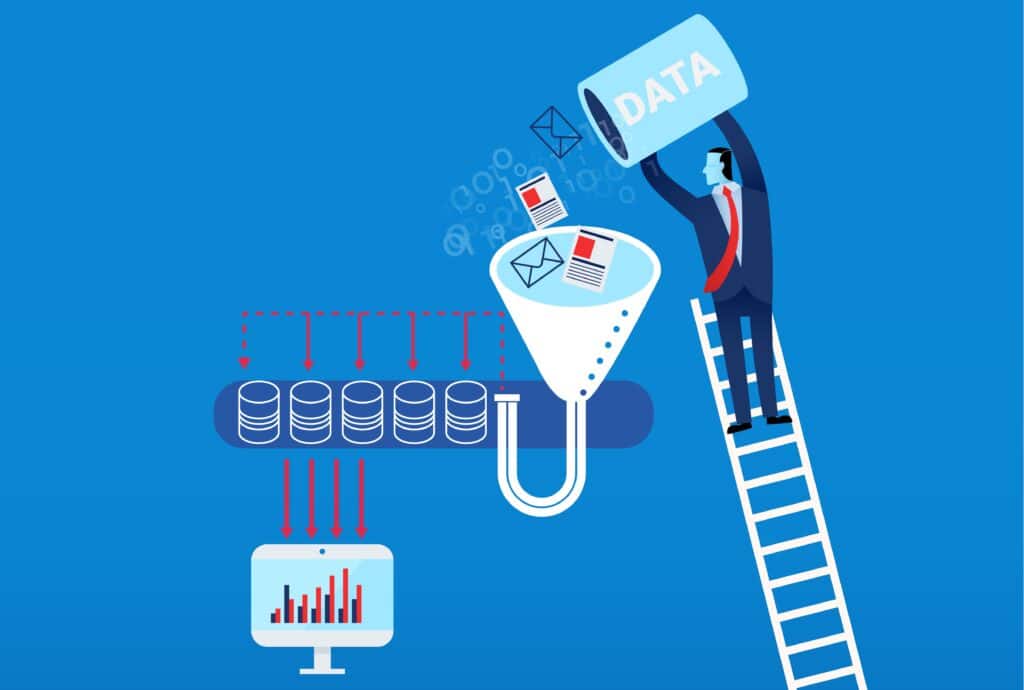Big data is a giant industry that generates billions in annual profits. By extension, data integration is an essential process in which every company should invest. Businesses that leverage available data enjoy exponential gains.
What is Data Integration?
Data integration is the process of gathering and merging information from various sources into one system. The goal is to direct all information into a central location, which requires:
- On-boarding the data
- Cleansing the information
- ETL mapping
- Transforming and depositing individual data pieces
Five Common Data Integration Problems
Getting a data integration process purring like a finely tuned Ferrari takes expertise, and the people running your system should intimately understand the five most common problems in an informational pipeline.
#1: Variable Data From Disparate Sources
Every nanosecond, countless bytes of data are moving rapidly around the ether — and uniformity isn’t a requirement. As a result, the informational gateway of any database or warehouse is a bit chaotic. Before data can be released into the system, it needs to be checked in, cleaned, and properly dressed.
#2: The Data/Security Conundrum
One of the most challenging aspects of maintaining a high-functioning data pipeline is determining the perfect balance between access and security. Making all files available to everyone isn’t wise. However, the people who need it should have it. When departments are siloed and have access to different data, inefficiencies frequently arise.
#3: Low-Quality Information
A database is only as good as its data. If junk goes in, then waste comes out. Preventing your system from turning into an informational landfill requires scrubbing your data sets of dreck.
#4: Bad Integration Software
Even if your data shines like the top of the Chrysler Building, clunky data integration software can cause significant issues. For example, are you deploying trigger-based solutions that don’t account for helpful historical data?
#5: Too Much Useless Data
When collected thoughtfully and integrated seamlessly, data is incredibly valuable. But data hoarding is a resource succubus. Think about the homes of hoarders. Often, there’s so much garbage lying around that it’s impossible to find the “good” stuff. The same logic applies to databases and warehouses.
What Are Standard Data Integration Best Practices?
Ensuring a business doesn’t fall victim to the five pitfalls of data integration requires strict protocols and constant maintenance. Standard best practices include:
- Surveillance: Before accepting a new data source, due diligence is key! Vet third-party vendors to ensure their data is legitimate.
- Cleaning: When information first hits the pipeline, it should be scrubbed of duplicates and scanned for invalid data.
- Document and Distribute: Invest in database documentation! Too many companies skip this step, and their informational pipelines crumble within months.
- Back it Up: The world is a chaotic place. Anomalies happen all the time — as do mistakes. So back up data in the event of mishaps.
- Get Help: Enlist the help of data integration experts to ensure proper software setups and protocol standards.
Data Integration Expertise and Assistance
Is your business leveraging its data? Is your informational pipeline making money or wasting it? If you can’t answer these questions confidently and want to explore options, reach out to Inzata Analytics. Our team of data integration experts can do a 360-degree interrogation of your current setup, identify weak links, and outline solutions that will allow you to move forward more productively and profitably.



 Some members of r/datasets on Reddit have released a dataset of all comments on the site dating back to 2005. The datasets are categorized by year and are available to download for free by anyone and it could be a fun project to analyze the data and see what could be discovered about reddit commenters.
Some members of r/datasets on Reddit have released a dataset of all comments on the site dating back to 2005. The datasets are categorized by year and are available to download for free by anyone and it could be a fun project to analyze the data and see what could be discovered about reddit commenters.


